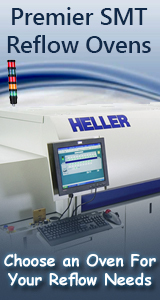“One-stop” expert consultation can keep semiconductor production on track through installation and beyond
For semiconductor manufacturers, compound semiconductor manufacturers, raw wafer material suppliers, and R&D labs, utilizing wet process cleaning equipment is critical to producing extremely reliable products, so partnering with a vendor with deep expertise in all aspects of the process – from equipment selection, design specification, testing, and installation/hook up – can be critical to success.
In such fabrication, “cleaning” refers to the etching process used, which precisely removes thin layers of material. In other applications, cleaning can also refer to the use of agents such as solvents, acids or bases to remove unwanted particulates and other contaminates such as photoresist.
The cleaning process may involve moving product into extremely hot chemical baths of acids, bases, or flammable solvents, so consulting with an expert can improve safety and ergonomics. It often requires selecting the most appropriate options from a number of technologies. This may involve various chemistries, temperature controls, chemical baths/dips, ergonomic designs, as well as cleaning, filtration, ventilation, safety, and disposal technologies.
It may also involve automating/upgrading the cleaning process for high-volume production. If the process takes place in a cleanroom, then the entire system including motors and robotics must be appropriate for that environment.
Hitting any snag can cause quality or safety issues, delay production, or even cost millions if the equipment must be prematurely replaced to accommodate automation. To avoid these “snags”, it can be invaluable to partner with an equipment manufacturer with industry expertise that can help to optimize the entire product life cycle from start to finish.
While all aspects of wet process cleaning are important to consider, failing to plan for even the smallest details of cleaning equipment can lead to challenges like not complying with the local fire or building codes or even being able to get it through doors, hallways or elevators into a clean room.
One area that is often overlooked but can be essential to consider is “facilitization” – meaning the installation, hook up (supplying deionized water, chemistries, drain lines, exhaust system etc.) and safety compliance. Facilitization is a major cost when considering new production equipment and changes in the equipment design to accommodate existing facility constraints can reduce this cost. That is why it is important to work with an equipment supplier that takes the facilitization cost into consideration when quoting a project.
“The facilitization process needs to be thought through because missing important details can cause serious problems that can compromise production and require retrofitting,” says Louise Bertagnolli, president of Boise ID-based JST Manufacturing, which designs and manufactures manual and automated cleaning equipment, including proprietary systems with all the features and transfer devices needed for a complete turnkey cleaning process.
As an example, Bertagnolli points to a variety of logistics that must be properly implemented. This can include, for instance, getting the product and chemistries in and out of the tool, and getting the tool into the cleanroom and set up, not to mention meeting safety and exhaust system requirements, etc.
“Because the cleaning equipment can be relatively large, even the size of elevators, doors and hallways must be checked to ensure it fits,” she says. “Failing this, one manufacturer had to have a crane lift the equipment through a 6th story window.”
So, to prevent mistakes and ensure that wet process cleaning equipment is designed, installed and “facilitizized” in complete compliance with all safety and performance requirements, it is important for the manufacturer to work with an equipment manufacturer with the expertise to provide one-stop guidance. Getting needed expertise up front ensures that the wet process cleaning equipment will perform as required, with no unwelcome surprises.
Planning for Success
Specifying for safety and compliance is critical and many aspects need to be sorted through to ensure the tool is designed to be integrated with the semiconductor manufacturing plant.
In terms of complying with fire codes, Bertagnolli says that if the semiconductor manufacturer has its own fire system in a clean room, then the cleaning equipment needs to communicate with it. So, if the tool has an emergency situation and needs to shut down due to fire, it must notify the house fire alarm system. Fire suppression lines must also be properly sealed and maintain sufficient pressure. Also, to qualify for fire insurance, factory mutual approved materials must be utilized.
When complying with OSHA, she adds that the manufacturer needs to have a three-foot clearance in front of lockout, tag-out areas when powering down for safety. So, this needs to be planned out as well.
According to Bertagnolli, however, there are a number of areas that are prone to mistakes during facilitization if expert guidance is not readily available. In these areas, she suggests that it is particularly important to seek help from an industry expert that can provide one-stop guidance as needed.
For example, to avoid unplanned problems that can delay production and may require expensive retrofits or workarounds, Bertagnolli says that it is necessary to plan for the logistics of the install, down to which elevators, hallways, and doors the wet processing tank/equipment must fit through.
She adds that because many clean rooms have sub floors, it is also necessary to ensure there are structural support/leg levelers on the right floor location.
For safety compliance and performance, the manufacturer must also provide sufficient exhaust system air flow velocity, at specific cubic feet per minute rate, designed for the production space.
In addition, facilitization involves correctly hooking up to deionized water, chemistries, and drain lines without any leaks.
“A common error is failing to provide pump pressure to chemistry lines when these need to be brought in from afar,” says Bertagnolli. “And per safety codes, dual containment is required on chemical lines.”
The chemical line/tank fill systems, in fact, must be configured correctly, or the chemistries will lack sufficient pressure to properly feed the tool or have other issues such as large amounts of entrapped gas. Facility chemical system’s with chemical lines that take too many turns, becoming convoluted, can reduce pressure to the point where the tank fails to fill. So, the chemical lines must be configured in a more direct manner that maintains enough pressure to properly supply the tool/fill the tank.
“For facilitization to go off without a hitch, a lot of expertise, planning, and attention to detail has to brought to the project beforehand,” says Bertagnolli.
According to Bertagnolli, thorough facilitization will even plan for and ease maintenance tasks to avoid unnecessary safety risk or cost.
For example, how a water line runs through the cleanroom should be considered because it can decrease safety and efficiency if it encroaches on the space used to perform maintenance tasks. If planned for, however, the waterline or the cleaning equipment’s maintenance space can be located in different, non-conflicting areas.
The bottom line is that for wet process cleaning equipment to be implemented smoothly and correctly, a lot of details need to be expertly determined in order to effectively handle design specification, facilitization and production.
When well-planned with appropriate one-stop guidance, the whole enterprise can get implemented correctly the first time at minimal cost, with production going smoothly far into the future.
For information contact: JST Manufacturing Inc., 219 E. 50th S., Boise, ID 83714; Phone: 800-872-0391, 208-377-1120; Fax: 208-377-3645; E-mail: info@jstmfg.com; or visit www.jstmfg.com






